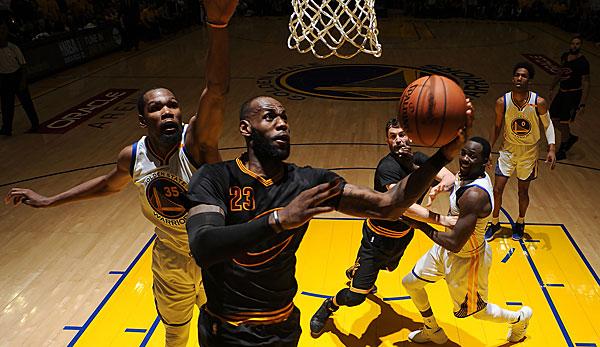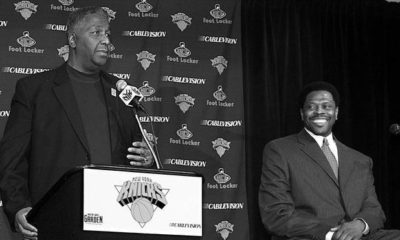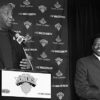As part of the NBA’s Analytics theme week, SPOX today looks at team stats beyond victories and defeats.How do you measure the quality of the offensive and defensive?Which data describe the different strengths, weaknesses and game ideas?And what statistics say more about the performance of a team than its track record?
“The only important statistic is the final result of the game,”said eleven-time champion Bill Russell.When it comes to entering the playoffs at the end of the season and the title a few weeks later, no one really cares how and why a team got to this point.
Nevertheless, the mountains of data collected every year in over 1200 NBA games provide valuable insights into the inner workings of the teams.
The trend towards more and more distance throws has taken the league by storm in recent years.Since 2012, the number of threes has increased by more than 80 percent.The Moreyball system, which tries to eliminate low yielding middle distance throws, is now considered almost synonymous with modern basketball.
The extent to which teams are relying on this strategy can be seen first and foremost by their three-pronged rate (3PAr).It measures the proportion of distance throws in all the throwing attempts of a team.Since General Manager Daryl Morey launched the trade for James Harden five years ago, the Houston Rockets have dominated the NBA in this category and reached an all-time high last season: more than 46 percent of their litters were fired by Harden, Trevor Ariza, Eric Gordon and Co.from beyond the triad.
But the trend is also pointing in the same direction for the rest of the league.While the average 3PAr in the 2011/12 season was still a good 22 percent, almost one in three field casts is now from a distance.The advantage is obvious: If a player from the middle distance makes the step behind the three-line, each hit brings an additional point.
Another way to increase the point yield per attack is to have “lighter” throws near the basket.Although the rockets are also very keen on that, another team competed for the top spot in the past season.Led by MVP Russell Westbrook, the Oklahoma City Thunder moved to the basket more often than any other team for dunks and layups, taking around 38 percent of their litters within the Restricted Area directly on the ring.
In addition to the higher average hit rate of these litters, there is another advantage.Teams that, like the Rockets and Thunder, attack the basket very often also provoke more fouls and more frequent free-throwing, by far the “best” throws in basketball.
The Free Throw Rate (FTr) measures the ratio of free-throw to field throw.If a team takes 100 throws in a game and also marches 25 times on the line, a free-throw rate of 25 percent results.
A further indication of a coach’s strategy is the view of the pace with which his team plays.It estimates the number of possessions a team has on average per game.In addition to the rockets and warriors, the fastest teams of the 2016/17 season were the Suns and Nets – young teams that are trying to establish “modern” gaming systems (currently without any real success).
Incidentally, the infamous “7 Seconds or Less”Suns of today’s rockets coach Mike D’ Antoni, who was infamous for their speed, had only twice the highest pace of the NBA in their five-year term of office (2003-2008).
In addition to their pace, there was another feature that stood out in the Suns game of this era: the unselfishness of their franchise player.Point Guard Steve Nash in particular made the Arizona-based team one of the teams with the highest assist percentage (AST%) for years.This tells you how many throws of a team have been directly prepared by a team member.
Nash lifted the Suns from last place to the top of the league within two years of their arrival from Dallas.In the meantime, the selfless play of warriors has become the measure of all things.In the 2016/17 season AST% of the champions was 70%, more than two-thirds of the litters they hit were preceded by an assist.
The opposite is true for teams that, like the Raptors (47 percent) and Thunder (53 percent), rely more on the quality of outstanding individual scorers such as DeMar DeRozan or Russell Westbrook.
Numerous assists are of course not yet proof of a pronounced ball-movement.Since the NBA installed cameras in the arenas of all 30 teams in 2013 to track every ball and player movement, the number of passes played has also been recorded.The rockets are yet another extreme example: Despite the fourth highest AST% in the league, they only finished 27th with 272 passes per game last season.
This indicates above all the special role of superstar James Harden.The Guard dominates the ball like no other player, while his teammates are expected to widen the field or complete Harden’s attacks.Also the Cavaliers, Raptors, Thunder and Wizards don’t move the ball very much through their own rows, while the Warriors, Spurs and Celtics like to divide the spalding.Ball-Movement is therefore less a question of success than of style and of course of the personnel matching this style.
Page 1: Offense and the Nash-Evolution
Page 2: Defense and net rating



















You must be logged in to post a comment Login